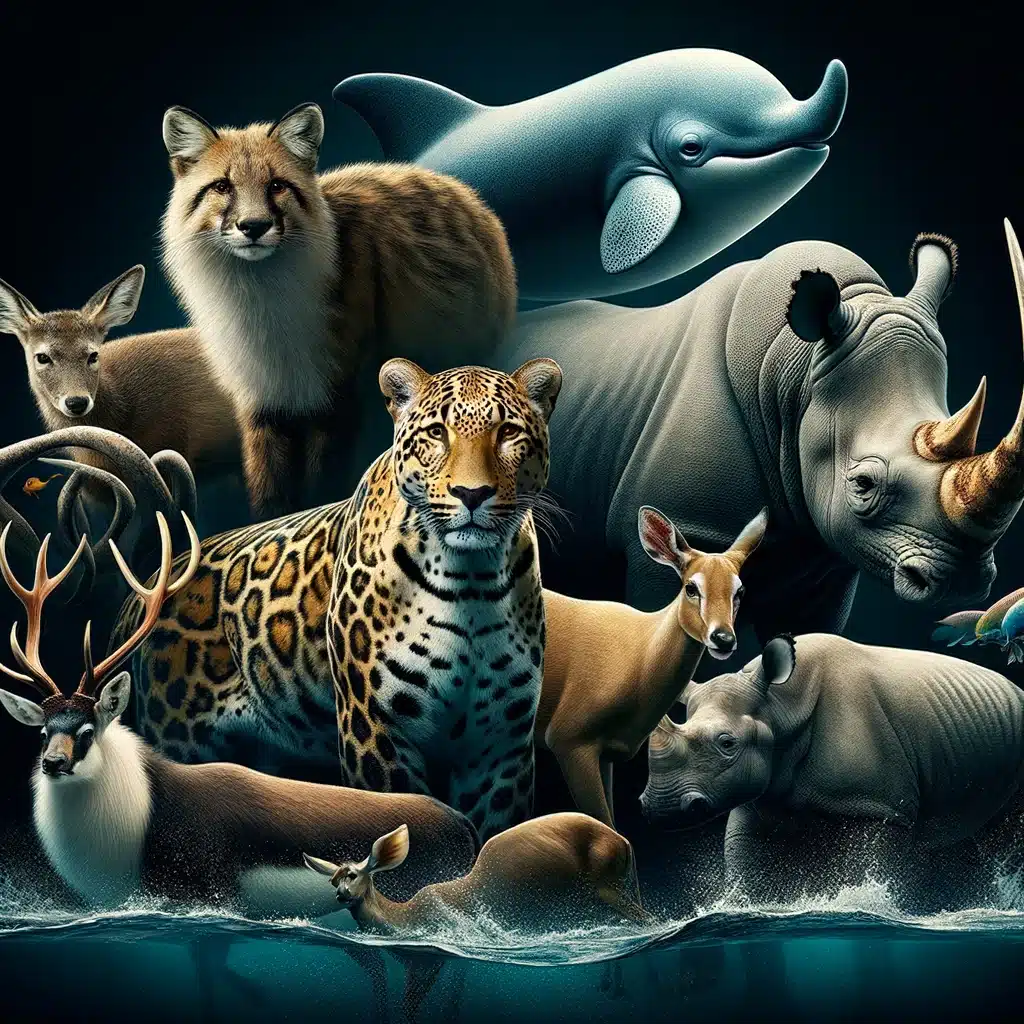As we navigate through the 21st century, the specter of extinction looms large over numerous species. Due to various factors such as habitat destruction, climate change, and human interference, many animals are at the brink of disappearing forever. Here are the 5 animals that could be extinct by the time you have grandchildren.
Amur Leopard (Panthera pardus orientalis):
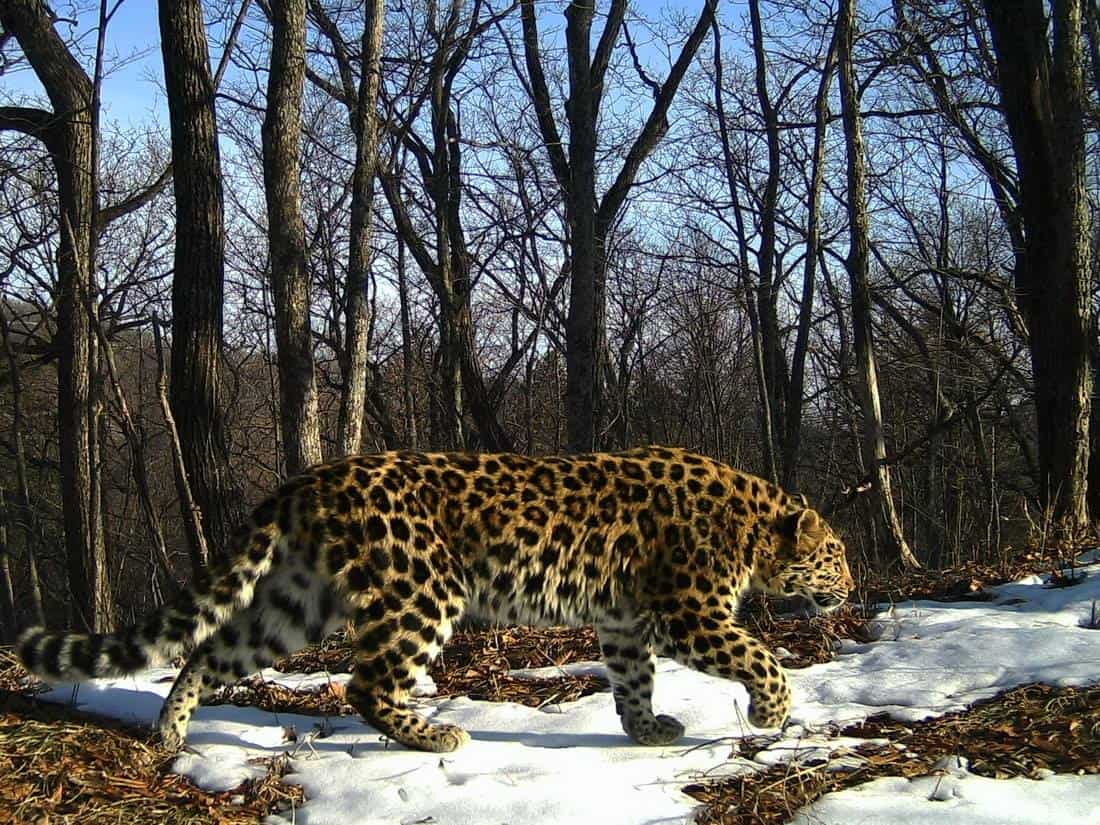
Image By Ministry of the Russian Federation for the Development of the Far East, Wikimedia.
| Characteristic | Description |
|---|---|
| Scientific Name | Panthera pardus orientalis |
| Population | Fewer than 100 individuals in the wild |
| Habitat | Temperate, broadleaf, and mixed forests |
| Geographical Range | Russian Far East and Northeast China |
| Diet | Primarily deer and wild boar |
| Physical Appearance | Golden-yellow coat with distinctive black spots and rosettes |
| Reproduction | 1-4 cubs per litter, born after a gestation period of approximately 90-105 days |
| Lifespan | 10-15 years in the wild, up to 20 years in captivity |
| Threats | Habitat loss, poaching, prey depletion, inbreeding |
| Conservation Status | Critically Endangered (IUCN Red List) |
Found in the Russian Far East, the Amur leopard is critically endangered, with fewer than 100 individuals remaining in the wild. Their habitat is under constant threat from deforestation, climate change, and poaching for their beautiful spotted fur. Conservation efforts are in place, but their numbers are so low that each loss significantly impacts the species’ survival.
Vaquita (Phocoena sinus):
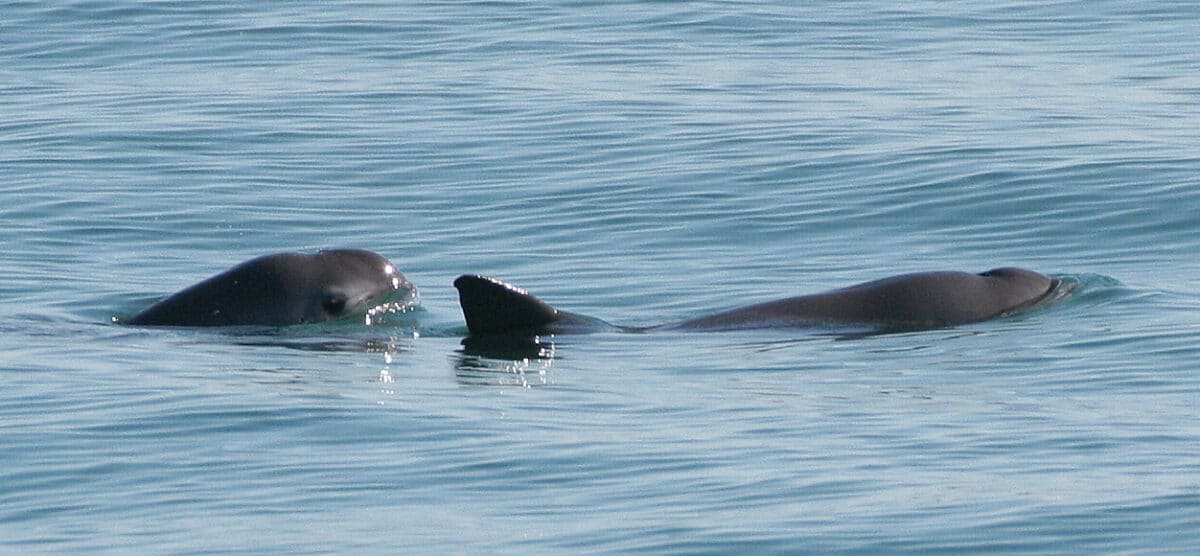
Image By Paula Olson, NOAA, wikimedia.
| Characteristic | Description |
|---|---|
| Scientific Name | Phocoena sinus |
| Population | Fewer than 10 individuals |
| Habitat | Shallow, murky lagoons along shoreline |
| Geographical Range | Northern Gulf of California, Mexico |
| Diet | Small fish and squid |
| Physical Appearance | Small, robust body with a distinctive dark ring around the eyes and dark patches on the lips, light grey body with a pale belly |
| Reproduction | Unknown specific details, but believed to have a low reproduction rate |
| Lifespan | Approximately 20 years |
| Threats | Bycatch in illegal gillnet fishing for the totoaba fish |
| Conservation Status | Critically Endangered (IUCN Red List) |
The world’s smallest and most endangered marine mammal, the Vaquita, is found in the northern part of the Gulf of California, Mexico. With an estimated population of fewer than 10 individuals, the Vaquita is teetering on the edge of extinction primarily due to bycatch in illegal gillnet fishing for the totoaba fish. The Mexican government and international organizations are making efforts to ban gillnet fishing and protect the remaining population, but the future of the Vaquita remains uncertain.
Javan Rhino (Rhinoceros sondaicus):
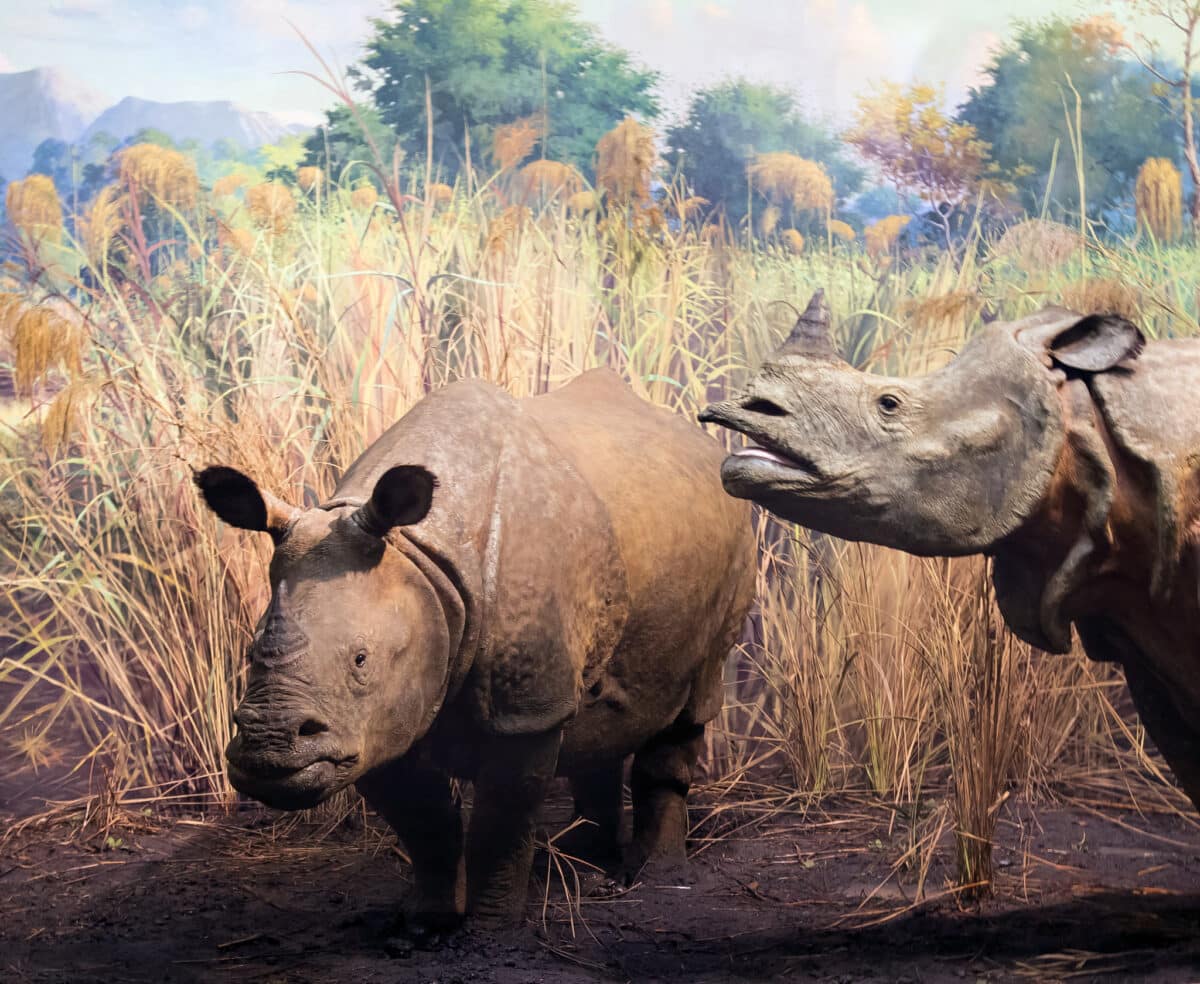
| Characteristic | Description |
|---|---|
| Scientific Name | Rhinoceros sondaicus |
| Population | About 60 individuals |
| Habitat | Dense tropical rainforests |
| Geographical Range | Ujung Kulon National Park, Indonesia |
| Diet | Leaves, shoots, branches, fruits, and aquatic plants |
| Physical Appearance | Grey skin with a single horn (usually less than 25 cm long), loose folds of skin that give the appearance of armor plating |
| Reproduction | One calf every 2-3 years after a gestation period of 15-16 months |
| Lifespan | 30-40 years |
| Threats | Habitat destruction, potential for disease transmission from domestic animals, very limited genetic diversity |
| Conservation Status | Critically Endangered (IUCN Red List) |
The Javan rhino is one of the most endangered mammals in the world, with only about 60 individuals left, all in Ujung Kulon National Park in Indonesia. They are threatened by habitat loss due to agricultural expansion and are particularly vulnerable to natural disasters and disease as they live in a very small area. Poaching, although less frequent now, remains a threat due to the high value of rhino horns.
Saola (Pseudoryx nghetinhensis):
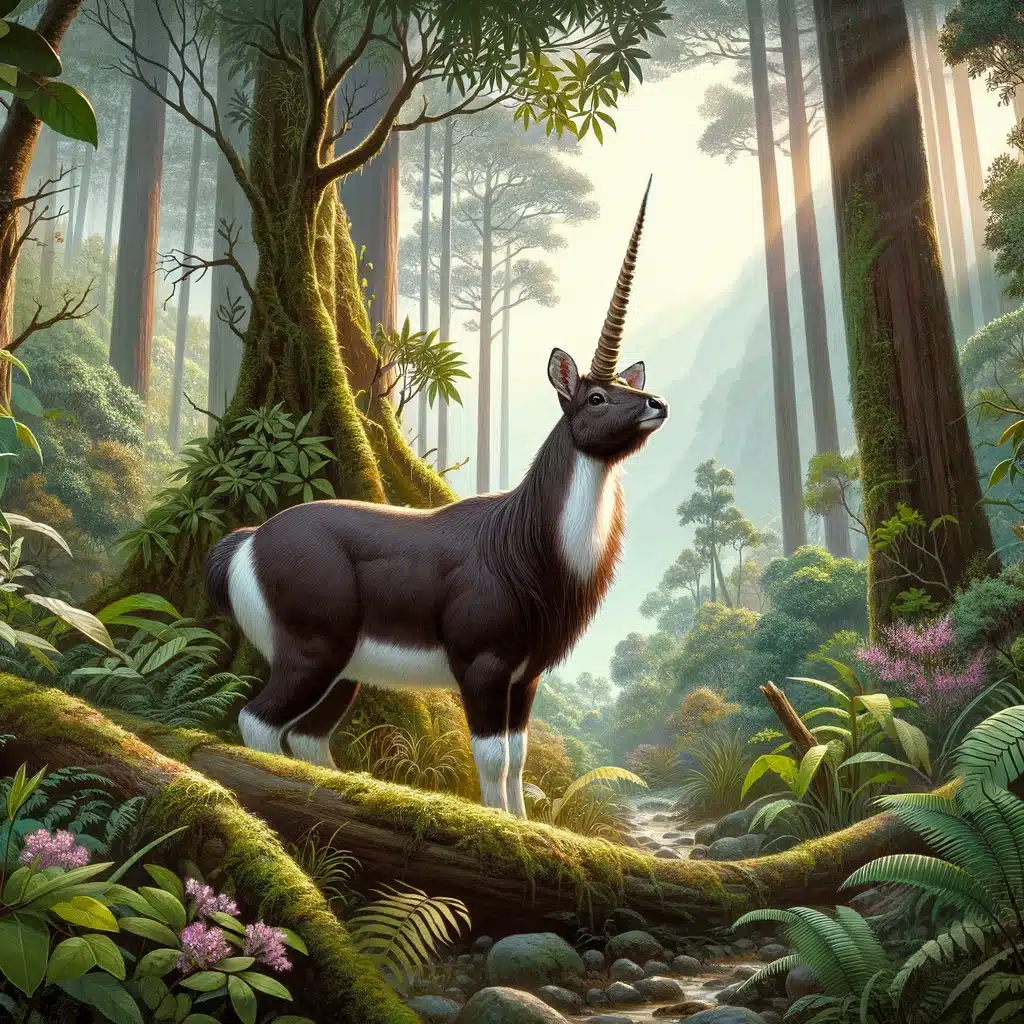
Image Created By Nina Howell Using DALL-E
| Characteristic | Description |
|---|---|
| Scientific Name | Pseudoryx nghetinhensis |
| Population | Unknown, but believed to be extremely rare |
| Habitat | Evergreen forests with little human disturbance |
| Geographical Range | Annamite Range of Vietnam and Laos |
| Diet | Foliage, branches, and possibly fruits |
| Physical Appearance | Long, straight horns (up to 50 cm), distinctive white markings on the face, and a dark brown to black body |
| Reproduction | Unknown, due to the species’ rarity and elusive nature |
| Lifespan | Expected to be 10-15 years, but unverified in the wild |
| Threats | Habitat loss due to logging and agriculture, hunting for horns and as bycatch in snares set for other animals |
| Conservation Status | Critically Endangered (IUCN Red List) |
Sometimes called the “Asian Unicorn,” the Saola is a critically endangered mammal found in the Annamite Range of Vietnam and Laos. Discovered only in 1992, little is known about this elusive creature. Hunting and habitat loss are the primary threats to their survival. As of now, no Saolas are known to exist in captivity, making their conservation in the wild crucial.
Sumatran Elephant (Elephas maximus sumatranus):
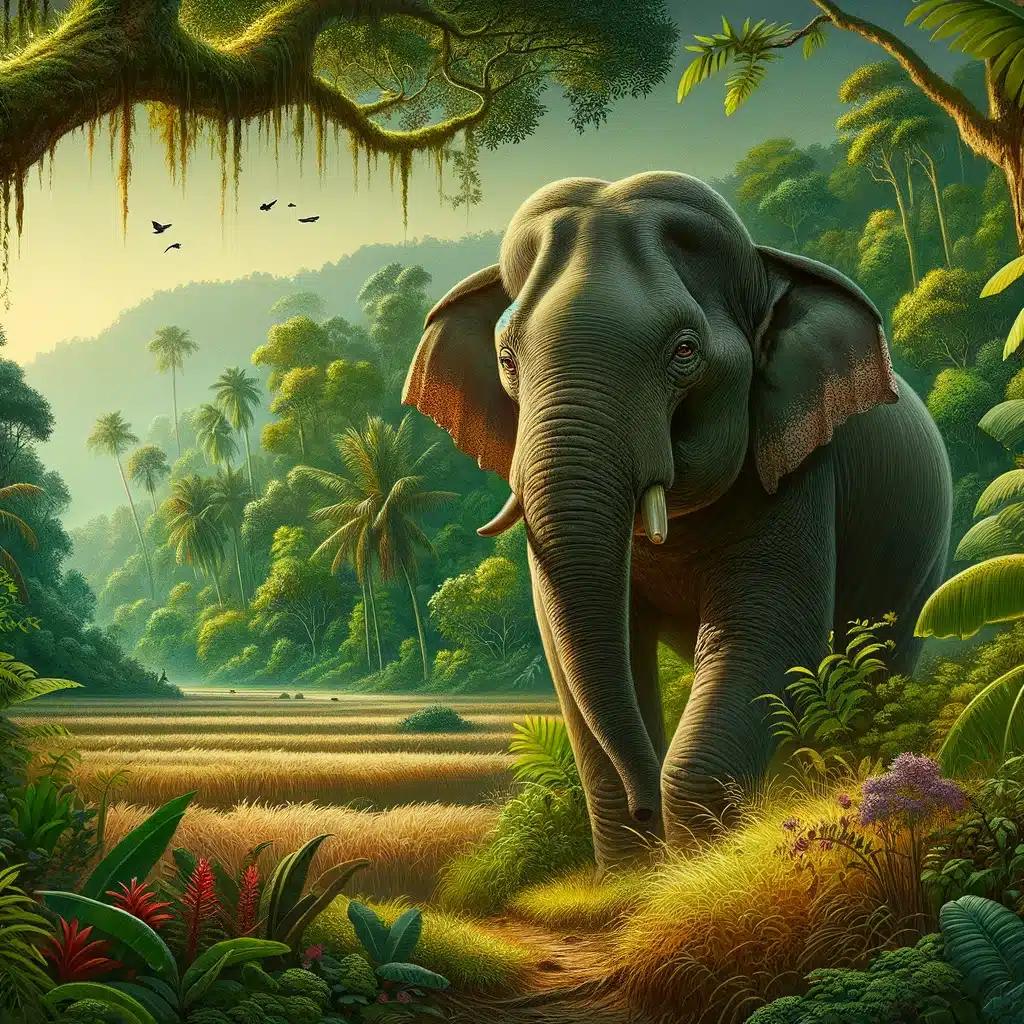
Image Created By Nina Howell Using DALL-E
| Characteristic | Description |
|---|---|
| Scientific Name | Elephas maximus sumatranus |
| Population | Fewer than 2,500 individuals |
| Habitat | Tropical forests, grasslands, and agricultural areas |
| Geographical Range | Sumatra, Indonesia |
| Diet | Herbivorous diet including grasses, leaves, shoots, and fruit |
| Physical Appearance | Smaller than African elephants, with dense, dark grey skin and smaller, rounded ears |
| Reproduction | Females give birth to one calf every 4-6 years after a gestation period of about 22 months |
| Lifespan | Up to 60-70 years in the wild |
| Threats | Habitat loss due to deforestation for palm oil and paper industries, human-elephant conflict, poaching |
| Conservation Status | Critically Endangered (IUCN Red List) |
Listed as critically endangered, and one of the animals that could be extinct by the time you have grandchildren, the Sumatran elephant has seen its population halve in one generation due to habitat destruction and human-elephant conflict. With less than 2,500 individuals remaining in fragmented forest areas of Sumatra, Indonesia, these elephants struggle to find sufficient food and are often killed when they venture into human-populated areas.
The plight of these animals is a stark reminder of the impact of human activities on the natural world. It underscores the urgent need for concerted global conservation efforts. While the situation is dire, there is still hope. Conservation programs, such as habitat protection, anti-poaching efforts, and breeding programs, can still make a difference. By supporting these initiatives and adopting more sustainable practices, we can help ensure that these magnificent creatures are around for future generations to witness.
Enjoyed ‘ 5 Animals that could be extinct by the time you have grandchildren‘? Up next:
Racing Extinction: Two Northern White Rhinos Remain – First IVF Pregnancy Offers Hope
Sci-fi or Reality: Can Animals Be Brought Back From Extinction?
Animals at Greatest Risk of Extinction in 2024
Join our Forum for free today!

- The Kleptomaniac Cat That Rules Houston - July 20, 2024
- Elephant Makes a Lifelong Friend at Sanctuary in Tennessee - July 14, 2024
- Evidence For World’s Oldest Fossilized Forest Discovered in New York - July 11, 2024

